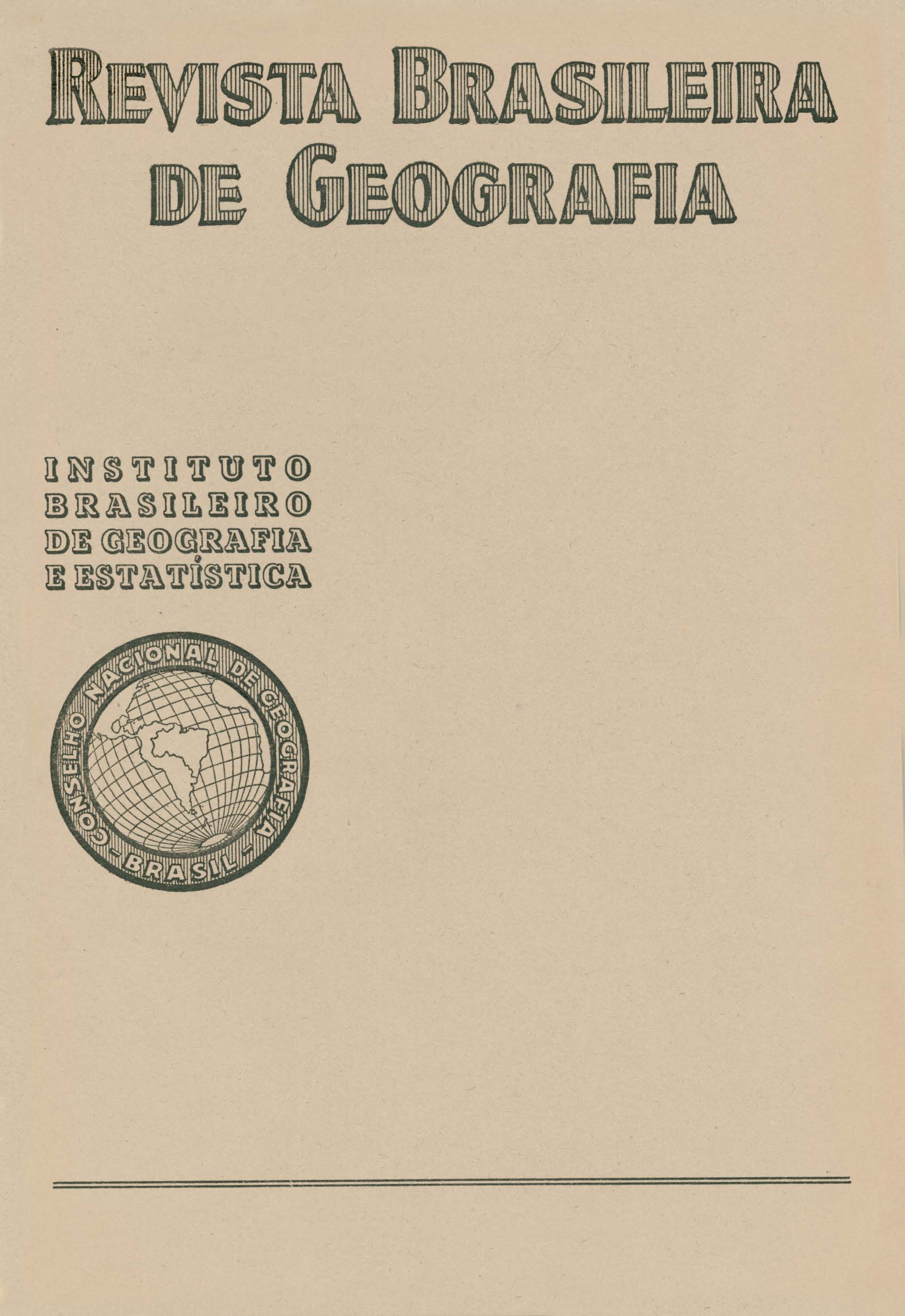Contribuição à geologia do Sudoeste da Bahia
Palavras-chave:
Bahia;, Geologia Arqueológica;, Geografia EstratigráficaResumo
The author, Alfredo José Porto Domingues, geographer at the Conselho Nacional de Geografia, presents a geological description of the southwestern region of the state of Bahia. This region is little known from a geological point of view.
In the first place, the author groups the geological formations in following manner: Archaic, Tombador series, São Francisco or Bambuí series, Perm-Triassic, Urucuia formation, Vazantes series, pit, cave, and "Canga" (iron hardpan) formations.
He emphasizes the difficulty of placing certain rocks, such as the mica schist, In the Archaic, as they might be classified as Algonquian combined with others, like the mica schists of the Minas series. He asserts the difficulty of separating these Algonquian quartzite rocks from the Tombador series, due to the fact that the mica schists grade unnoticeable into quartzites, with no evident line of demarcation. The contact line between the Algonquian and the Archaic here is a question of individual rocks, there being no other way of. separating them.
After studying the other rocks, the author designates the localities in which they occur. Thus he states that, in Correntina, gneisses are to be found cut by acid veins which are rich in gold. Smaller Archaic formations o f this type are to be found in Goiás.
Belonging to the Algonquian, the Tombador series is to be found with its area of occurrence represented by the high mountains which make up one of the sections of the Serra do Espinhaço, this being a prolongation of the Minas spur (from Diamantina) .
The author distinguishes the various types of rocks of this series and attempts a stratigraphic study of the series, locating the quartzites at the base of the same. The series appears with a general incline to the east, being encased like a wedge in the Archaic.
The São Francisco series, this name taking precedence over Bambuí, o<:curs along the São Francisco River and is represented by limestone, sandstone, and shale. This series was little disturbed and is almost horizontal. In Bom Jesus da Lapa, coral formations have been found which permitted the first geologists to place it in the Silurian.
In the Perm-Triassic were found sandstones and var-colored shales cut by basic igneous rocks, which are also to be found in Goiás near the Great Escarpment.
The Urucuia formation is represented by the sandstone which makes up the great plain. The system of joints which cuts this sandstone is reflected in the hydrography, which consists of a group of parallel rivers. The sandstone is of great importance, as it serves as the reservoir of a great underground water table which feeds the extensive hydrographic network o f the left bank o f the São Francisco River.
Lying above the other formations is to be found an extensive clay deposit with alternating layers, in which clays o f various colors and sand succeed each other. This constitutes the Vazantes series, and the conclusion is drawn that this is of fluvio-lacustrian origin. This formation must have started its deposition in the Pleistocene or perhaps even the Pliocene, with deposition continuing until the Holocene.
In the caves of the limestone region are to be found clayey formations at times containing a fairly large number of fossils, which are placed in the Pleistocene. In the same way, in the pits far from the river, and over the Archaic and the clay of the Vazante formation, are to be found collections of large mammals, which can also be referred to the same period.
Covering the geological layers there is often to be found a thick layer of ferrous oxide, which is known as "Canga" and makes up the iron hat of many of the hills. The age of this formation is much disputed, however; opinion being divided between the Pleistocene, Tertiary, and some even placing it in the Holocene.
The author devoted a part of a chapter to the Serra de Monte Alto, a plains-type highland, morphologically similar to the highlands on the left bank, made up of sandstone, and belonging to the Urucuia formation. Based on the correlation of this sandstone with that of the Cretaceous sandstone formation, the Serra is geological testimony that the Cretaceous deposit extended as far as this region.
In conclusion, the author present a paleogeographic sketch in which he studies the succession of geologic phenomena which are to be found in the regions that were studied.






